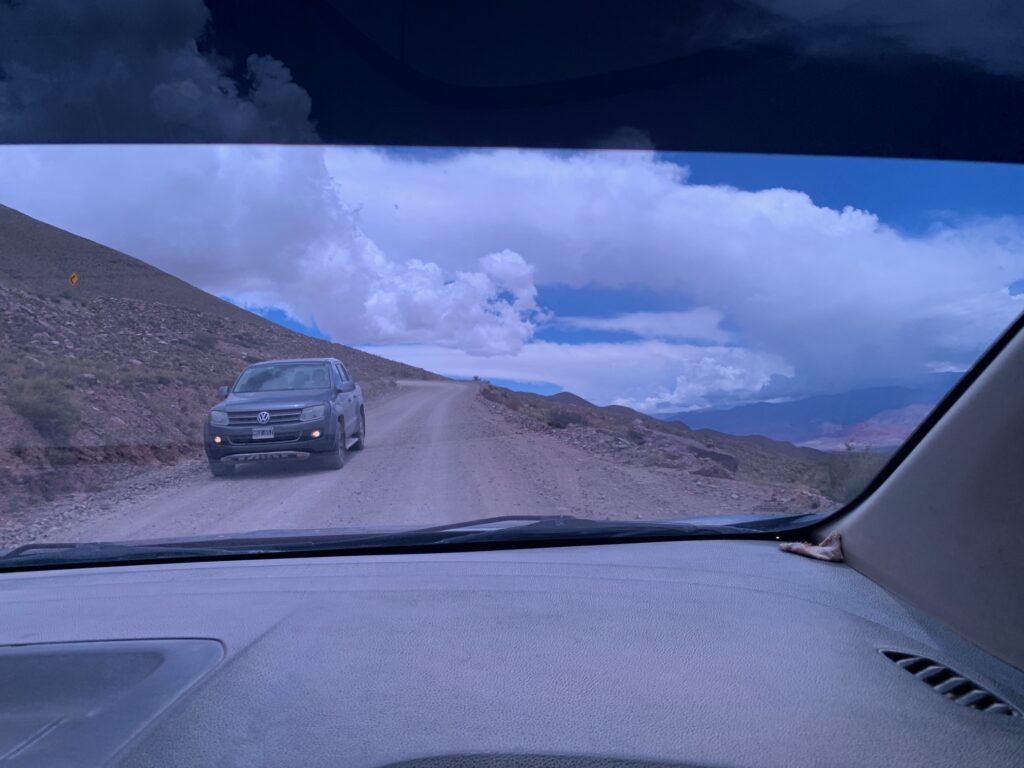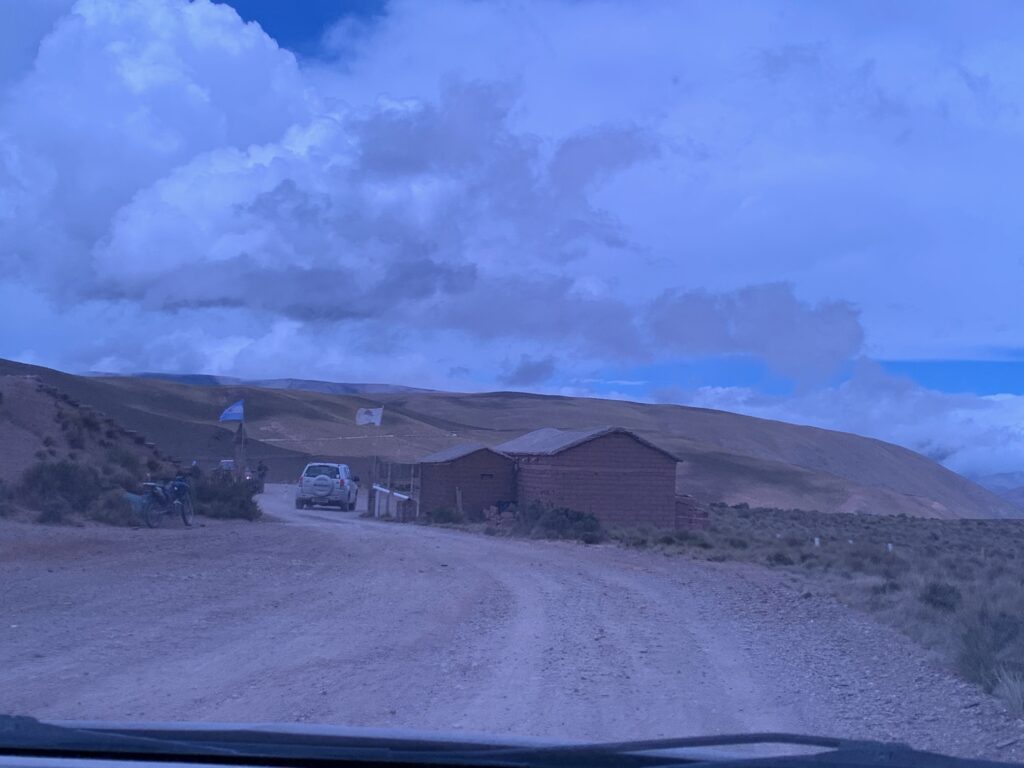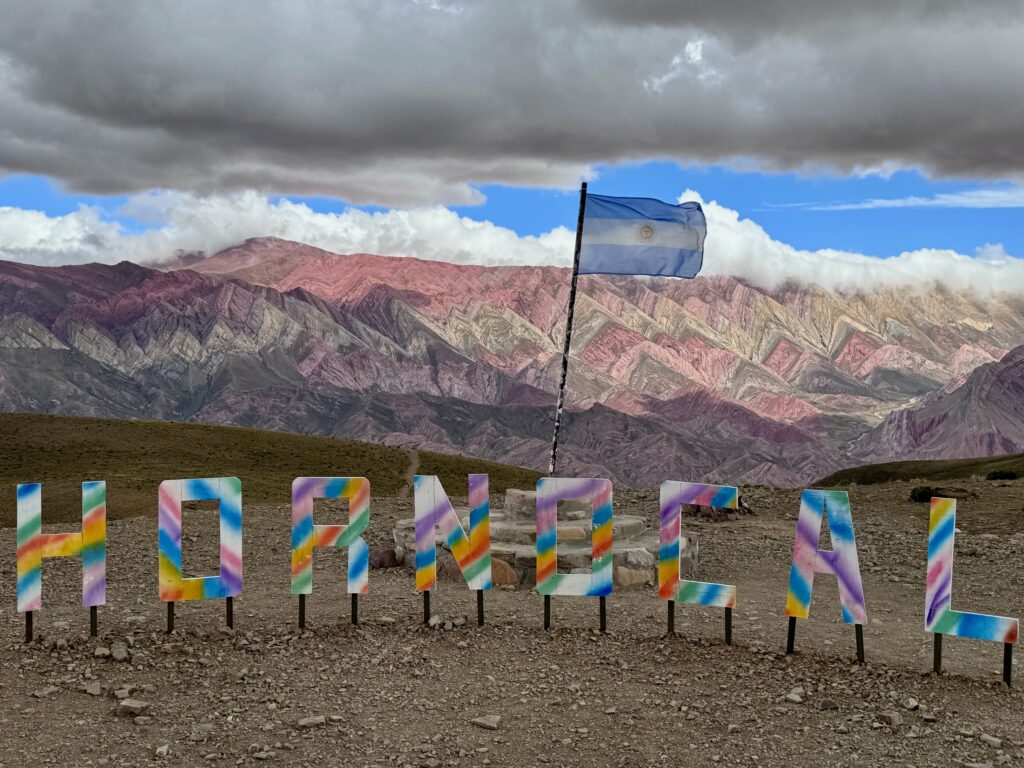The Hornocal “mirador”
Highlights
Hornocal is a must see destination in the Jujuy Province of Northern Argentina. The multicolored stacked triangular mountain sides are unique and of outstanding beauty.
Time of Visit: January 2024
Duration of Visit: Day trip from community near Tilcara
Description
Hornocal is a unique and colorful mountain located in the Jujuy Province of northern Argentina. This is a destination that is not to be missed.
Hornocal is actually a long mountain range but the part that visitors want to see is the stacked triangular shaped mountain side of different colors. Locals refer to this part of Hornocal as the mountain with 14 colors. If you ask the local people about Hornocal, they associate the word as referring to this colorful part of the mountain range.
Here we describe how we visited the colorful part of Hornocal and also share some tips from what we learned during our exploration.
Time of Visit: January 2024
What Is Hornocal?
Hornocal is locally referred to as the mountain with 14 colors. It is about eight kilometers in width and just mesmerizing to watch.
The mountain range of Hornocal is not reachable as there are no roads that lead to it for obvious reasons. However, there is a viewpoint or “mirador” that offers breathtaking views.
How To Get To The Viewpoint
The epic journey to Hornocal viewpoint begins at the small town of Humahuaca. If you have a vehicle, you can drive yourself to the viewpoint. Just take Ruta 73. It takes approximately between 40 minutes to an hour depending on how fast or slow you want to drive. Ruta 73 between Humahuaca and the viewpoint is graded dirt and gravel road. There are washboard sections making the ride jaw jarring and slow going.
If you are renting a car, make sure that the rental car company allows you to drive on Ruta 73. Our’s said that we could not so we had to hire one of the many locals that take visitors to the viewpoint. This is the second way to reach the “mirador”.
The locals that offer rides to the “mirador” can be found at two locations. You will find them at the Tourist Office right off Ruta 9 at the south end of town. The other location is at the plaza by the municipal building. We hired our ride at the first location. The starting price was 28K ARS for a “camioneta” which was a Chevy HHR for the person we negotiated with. The advantage of hiring a ride is that you are on your way as soon as both parties agree on the price.
If you are a group of three or four, then hiring a ride is a good value. We negotiated and were able to get it down to 25K ARS. They did not speak English so better brush up on your Spanish or have an offline translator app handy as cell phone signals can be spotty.
The locals at the plaza by the municipal building quoted 10K ARS per person. We do not know how big the group should be before they leave nor the type of vehicle they use to take visitors to the “mirador”.
The Way To The “Mirador”
The rough road climbs in elevation. In some sections, the road is only wide enough for two vehicles, especially at the side of the mountain with steep drop offs.


There are a couple of sections where the road passes through dry wash. Our driver, Jorge, said that the road is impassable after a heavy rain. They have to wait a day or two for grading equipment to clear the road.
We did not notice any signs along Ruta 73 indicating that it would lead to the “mirador”. There were no communities along the way so there would be no one to ask for directions. Best to download an offline map for navigation as cell service was not available.
We saw several stocked cars driving on Ruta 73. We did not observe any car breakdowns. In our opinion, the road is totally fine for a regular car. Our car rental company said their tow trucks do not travel of Ruta 73 because it is too narrow to maneuver.
More Fees
We reached the manned entry point about a couple of kilometers from the “mirador”. We paid 500 ARS per person. The entry fee did not apply to our driver.


At The “Mirador”
The “mirador” has a large parking lot. There is a large colorful sign with the word “HORNOCAL” that is perfect for taking pictures. There are also locals who sell various handicrafts at the viewpoint.
If nature calls on you, luckily there are restrooms at the viewpoint too. Just do not have high expectations.
Finally, there is a distinct trail that goes down from the “mirador” to a hill to get a slightly closer view of the colorful mountain. We would caution you that it is easy to go down this trail but you may feel lightheaded on your return trip. Just take it slow and take frequent deep breaths with each step.


You may also see a group of guanacos along this trail.
Our driver gave us 30 minutes at the viewpoint but it turned out to be insufficient. We took almost an hour as we walked very slowly back to the viewpoint from the hill.
Best Time of Day To See Hornocal
Our rental car agent at Salta said that the best time to see Hornocal is at 2 PM (the agent was a former tourist guide). The early afternoon is best because the colorful side of the mountain faces west. The rental car agent said that all you could see would be the mountain outline if you go in the morning.
Weather
Our driver, Jorge, who is from Humahuaca, said that the best time to visit Hornocal is during the winter. It is the dry season and the Humahuaca’s day time temperatures are in the 20s (degree C) and 10s in the evenings. However, the viewpoint is at 4,350 meters or 14,268 feet above sea level. So there is a significant drop in temperature at the viewpoint compared to Humahuaca. You may have to bundle up at the viewpoint if you go during the winter.
We went in early January 2024 during the rainy season. We did not get rained on during our six day stay in Jujuy Province. But clouds formed in the afternoon and also became windy, very windy. It was actually sunny and clear at Humahuaca when we started our journey but was partially sunny at the viewpoint.
As you can see from the pictures, the colorful side of the mountain both has cloud cover and sun. You can also see the clouds that have formed above it. We noticed lightning strikes from far away and some thunderous roar.
Jorge said that there is equal number of tourists during the winter (June, July, August) and summer (January, February, March).
How to Reach Humahuaca
The quickest way to reach Humahuaca is to fly to the city of Salta (airport code SLA). From Salta, it is about 3.5 to 4 hours of driving to Humahuaca.
We saw double decker buses on Ruta 9, presumably coming from larger cities such as Salta.
If you are staying in the town of Tilcara and do not have a rental car, the San Jose bus company serves as the local transportation between the two communities.
Summary
Hornocal is a mountain range in the Jujuy Province of northern Argentina. However, the word Hornocal is associated with the stacked triangular shaped side of the mountain that has different colors. Locals commonly refer to it as the mountain with 14 colors.
The colorful part of the mountain can only be viewed from a viewpoint that sits at 4,350 meters above sea level. The air is thin and your guide will advise you to move slowly to avoid being lightheaded.
You would start your epic adventure to see Hornocal from the town of Humahuaca. There are locals that can take you to the viewpoint for a reasonable fee. You can also drive yourself there if you have a vehicle as the dirt and gravel road is well graded but has washboards in some sections. You will also have to pay a small entry fee to get to the viewpoint.
Hornocal is a truly beautiful destination. You will be out of breath literally when you get there as the air is much thinner from where you started. So just take deep breaths, move slowly and enjoy the view.

